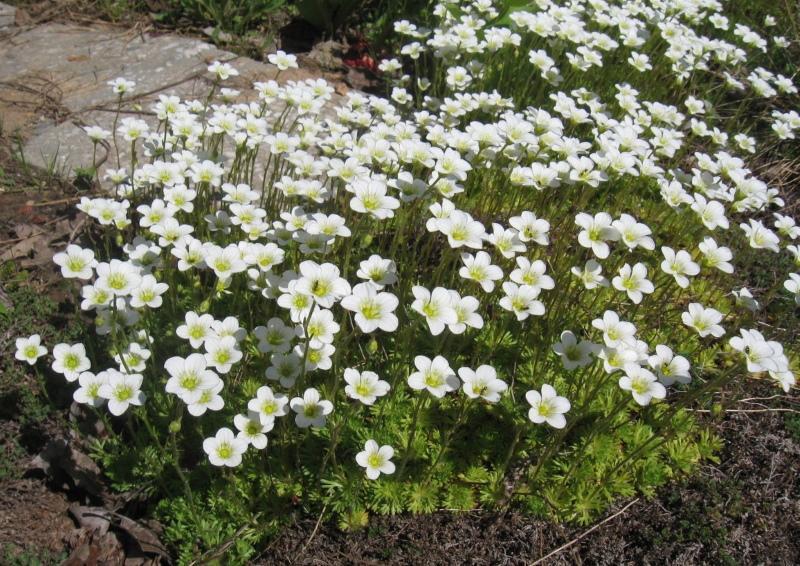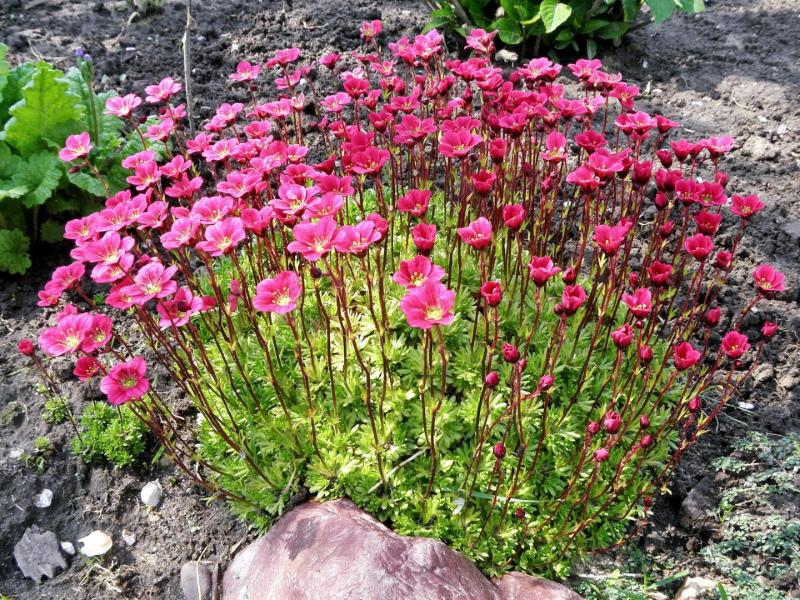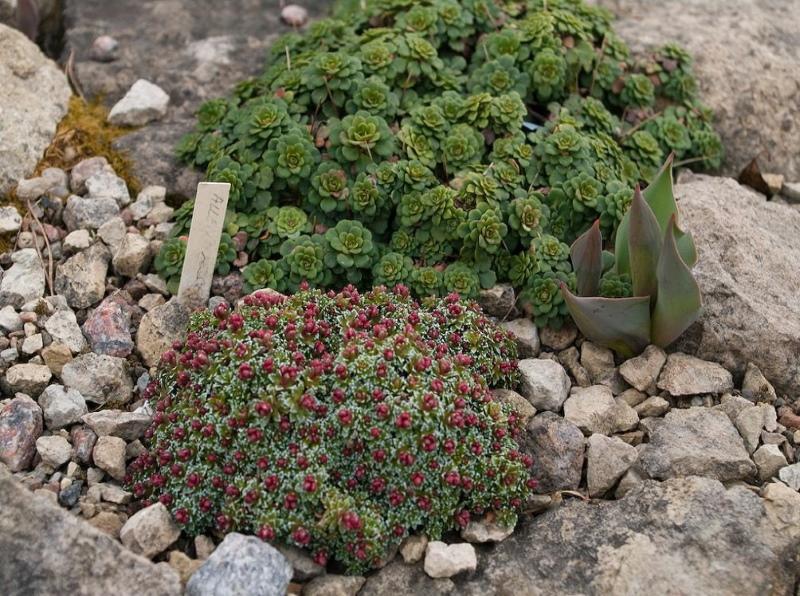Such a multifaceted and unpretentious saxifrage - planting and care, photo
 In nature, it can be seen among the rocks, and right on them, and it is thanks to this vitality that small bushes grow beautifully in "captivity", especially in rockeries and rock gardens. This is one of the most unpretentious plants - saxifrage, planting and care (photo will be further) for which are very simple, but extremely diverse. And all because the species diversity of the culture is striking both in its appearance and in the peculiarities of cultivation. Some species do well even indoors. But most saxifrage still prefer fresh air and open ground.
In nature, it can be seen among the rocks, and right on them, and it is thanks to this vitality that small bushes grow beautifully in "captivity", especially in rockeries and rock gardens. This is one of the most unpretentious plants - saxifrage, planting and care (photo will be further) for which are very simple, but extremely diverse. And all because the species diversity of the culture is striking both in its appearance and in the peculiarities of cultivation. Some species do well even indoors. But most saxifrage still prefer fresh air and open ground.
Saxifrage - planting and care, photo

The roots of the saxifrage are so powerful and strong that they literally break stones. They fill in the resulting cracks, and the bushes grow strongly, forming a thick carpet.
 The saxifrage grows in a dense curtain, consisting of numerous deciduous rosettes. The leaves in most species are round, fleshy or, conversely, leathery, but there are also beautiful feathery plants. Almost all saxifrage blooms beautifully throughout the summer, forming a thick rug with many small flowers. They are collected in loose inflorescences and rise above the bushes on tall graceful peduncles.
The saxifrage grows in a dense curtain, consisting of numerous deciduous rosettes. The leaves in most species are round, fleshy or, conversely, leathery, but there are also beautiful feathery plants. Almost all saxifrage blooms beautifully throughout the summer, forming a thick rug with many small flowers. They are collected in loose inflorescences and rise above the bushes on tall graceful peduncles.
How and where to plant saxifrage
 If there is a desire and time, you can grow a saxifrage from seeds, just keep two points in mind. Firstly, they are very small, and secondly, some species have low germination. It is better to sow seeds in early spring for seedlings or when the soil warms up - immediately into the ground. But before that, mix them with a little sand, like carrot seeds before sowing. This will avoid thickening of the seedlings.
If there is a desire and time, you can grow a saxifrage from seeds, just keep two points in mind. Firstly, they are very small, and secondly, some species have low germination. It is better to sow seeds in early spring for seedlings or when the soil warms up - immediately into the ground. But before that, mix them with a little sand, like carrot seeds before sowing. This will avoid thickening of the seedlings.
To increase germination, send the seeds 1.5-2 months before sowing. stratification... Such planting material will give the best result both in the number of seedlings and in the germination time (they will emerge a little earlier).
 As for the planting site, almost all types of saxifrage are not demanding to the composition of the soil and do not need fertile soil. In nature, they grow among rocks, so another aspect is more important for culture, namely, drainage. There are species that prefer dry stony ground, and there are moisture-loving saxifrage. But they all do not like it when moisture stagnates. Lighting requirements are also different. In semi-shady places, it is better to plant varieties with succulent leaves. And in a well-lit area, there are small-leaved saxifrage, whose plates are hard.
As for the planting site, almost all types of saxifrage are not demanding to the composition of the soil and do not need fertile soil. In nature, they grow among rocks, so another aspect is more important for culture, namely, drainage. There are species that prefer dry stony ground, and there are moisture-loving saxifrage. But they all do not like it when moisture stagnates. Lighting requirements are also different. In semi-shady places, it is better to plant varieties with succulent leaves. And in a well-lit area, there are small-leaved saxifrage, whose plates are hard.
Features of caring for saxifrage in the garden
 Caring for an unpretentious perennial is simple, but depends on its species. In general, it consists of the following activities:
Caring for an unpretentious perennial is simple, but depends on its species. In general, it consists of the following activities:
- Regular watering, but always moderate and preferably with settled warm water, in the morning or evening.
- Top dressing only as needed and for species that prefer more fertile soil. At the same time, give preference to potassium-phosphorus complexes. From an excess of nitrogen fertilizers, the bushes stop blooming. Do not forget to stop all feeding at the end of summer.
- Shelter for the winter. Saxifrage easily tolerate frosts down to minus 20 ° C, but only under snow cover. If winters in your region are not very snowy, cover the bushes with at least spruce branches.
Saxifrags reproduce most often by dividing the bushes, which grow rapidly. Or, at the end of summer, you can dig in the layers, and in the spring you can transplant the rooted young bushes to a new place. It is possible with seeds, but then flowering will have to wait until next season.